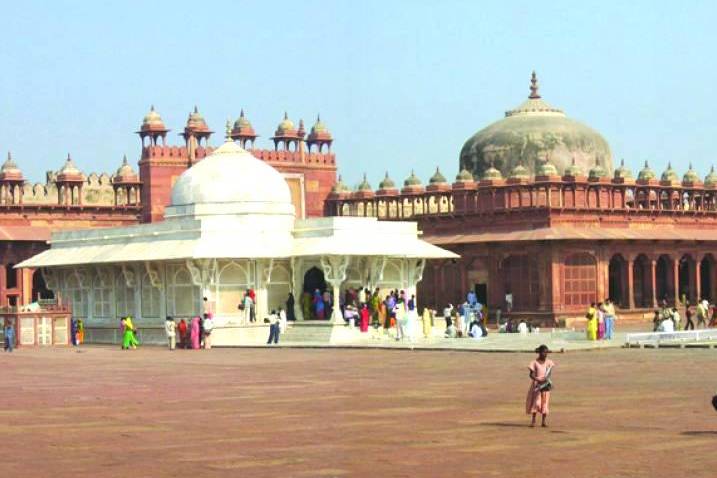Fatehpur Sikri, which was the capital of the Mughal Empire for about 10 years, is also referred to as the City of Victory. This is located in Uttar Pradesh’s Agra district and was built by the great emperor Akbar in the year of 1569. Emperor Akbar thought of making this place his capital after he won over Ranthambore and Chittor. He also made this move in the veneration of the great Sufi Salim Chisti. After the move, the planning and building of the walled city began and it took around fifteen years. This city was initially called Fatehbad from the word Persian word Fateh meaning victory only to be later named as Fatehpur Sikri. Fatehpur Sikri is also the birth place of the legends which included Akbar and his nine jewels, the famous courtiers.

There are many popular and famous monuments here which boast of exceptional quality. One of the most famous monuments is the Ranch Mahal which has a structure resembling that of Buddhist temples. The Diwani-i-Am which is the basically the hall for the public audience and grievance settlement has a very interesting structure with seating arrangements for Akbar and his ministers in the centre. This monument is connected directly to the Daulat Khanna and Diwan-i-Khas, which is the assembly hall for the emperor and his jewels, in the north. The Diwan-i-Khas which is also called the ‘Jewel House’ is famous for the central plan wherein the circular balcony, called the ‘throne’, is placed on the top of the capital. Other prominent monuments are the Turkish Sultana, the palace of Birbal, the palace of Jodh Bai, the pavilion of Anup Talao, the Caravanserail.

The Jama Masjid, otherwise referred to as the great mosque is a place with a reverence that could be compared to Mecca. The Buland Darwaza, built in the year of 1575 and present in the southern direction of the court, is a symbol of the many victories. This place stands out of all the preserved and famous Mughal architectures of India and thus is a must-go-to place for any traveller
- +91 9711188569
- bhavya.holidays@gmail.com
- 12 A / 26, W.E.A. Saraswati Marg, Karol Bagh, New Delhi - 110005

